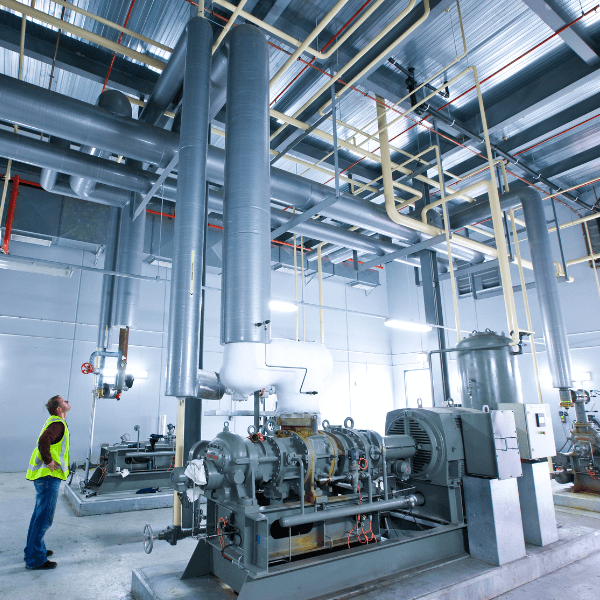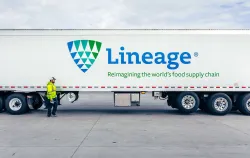Cold Storage Warehousing: The Heart of the Cold Chain
Cold Chain 101: Exploring the Cold Chain, One Link at a Time
March 19, 2024
The majority of the food that makes it to our dining room tables embarks on an intricate and complex journey before reaching its final destination. Our previous article in this Cold Chain 101 series focused on the first link in the cold chain: food processing facilities. The next link in the cold chain gets right to the heart of temperature-controlled logistics: cold storage warehousing. This crucial step helps ensure the freshness and safety of our food, slowing down nature’s clock and allowing nutritious food to reach all the different corners of the world.
What is a Cold Storage Warehouse?
Arguably the single most important component of the cold chain is the cold storage warehouse. This technological marvel is what makes the whole cold chain possible. Coming in a wide variety of sizes and locations, with a diverse catalog of temperature-controlled services, this interconnected network of refrigerated buildings allows us to safely store food as it awaits the next step in the food journey.
Cold storage warehouses are heavily insulated buildings that are built to keep the cold air in while also keeping the warm air out. They rely on heavy-duty HVAC systems to keep the products cool or frozen, and meticulous building construction and maintenance to ensure the overall integrity and efficiency of the building itself.
From traditional, big box, cold storage warehousing to cutting-edge, automated systems, each facility can be designed to meet the precise needs of the food it protects.
What are the Different Types of Cold Storage Warehouses?
There are several different types of cold storage warehouses, all designed to meet specific needs in specific areas. At Lineage, we have a massive network of warehouses across several continents that specialize in refrigerated and frozen products.
Refrigerated and Frozen Warehouses
One of the key differentiators for cold storage warehouses depends on what types of products are being stored in them. These fall largely into two main categories: refrigerated and frozen. At many Lineage warehouses, we’re able to accommodate both types of product in different sections of the building. The refrigerated containers and rooms have a temperature range between 32° - 50°F (0° - 10°C), depending on the types of product being stored. Typical products in refrigerated storage include fresh fruits, vegetables, meat and dairy.
Frozen and blast frozen products are kept in a different area because they require frozen temperatures between -22° - 32°F (-30° - 0°C) to aid in preservation. Think of items like ice cream, popsicles and frozen fruits and vegetables. To best preserve these types of products, they undergo a quick blast freezing service to rapidly and safely bring them down to frozen temperatures.
Port-Centric Warehouses
With food traveling all over the world, having access to key port locations in a wide variety of geographic markets is essential. Port-centric cold storage warehouses are built within direct proximity of a port location. Not only can these warehouses offer frozen and refrigerated storage options, but they can also offer import/export services, inspection services, drayage and customs brokerage to help navigate the nuances of international trade. These key warehouses can also have easy access to a wide variety of transportation services, from rail to truck, helping food products get from point A to point B as quickly and efficiently as possible.
Automated Warehouses
Next-gen automated cold storage warehouses are already being built and operated at Lineage. These futuristic buildings use robotics and artificial intelligence to streamline the receiving process and placement of products into the facility. This helps ensure everything is in the right spot at the right time, allowing, in many cases, quicker turn times and the ability to store more products. Lineage and our Data Science team are actively looking for even more ways to streamline the process and create more efficiency and sustainability within our warehouses.
Built-to-Suit Warehouses
We recognize that not all food products or customers have the same storage requirements. That’s why Lineage offers built-to-suit warehousing solutions to accommodate just about any cold storage requirements. These tailor-made cold storage facilities are built to meet customer’s specific needs, whether it’s for meeting the stringent conditions needed for frozen seafood, ripening fruits like apples and bananas or anything in between. These bespoke facilities are designed to meet the unique demands of different food items.
Bringing It All Together: The Essential Role of Cold Storage Warehousing in Our Food Journey
In the complicated and largely invisible web of the cold chain, cold storage warehouses are at the heart. Whether it’s refrigerated or frozen, port-centric or inland, automated or traditional, these temperature-controlled warehouses make it possible for an orange from a farm in Florida to make its way to a breakfast plate in Amsterdam. This global system of cold storage warehouses helps ensure the freshness, safety and nutritional value of the food that ends up on our tables. From the traditional to the technologically advanced, each type of warehouse plays a unique role in slowing down nature's clock, enabling a diverse range of nutritious food to traverse continents and oceans.
Through this Cold Chain 101 series, we've explored topics like food processing and cold storage warehouses as we track our food’s journey from farm to table. For our next installment, we’ll dive into the final link: transportation and redistribution.


